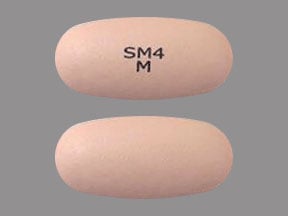
Saxagliptin-metformin ER Coupons & Savings Card – Discount Prices from $359.46
Generic for: Kombiglyze xr
My prescription
Edit
2.5-1000MG, Saxagliptin-metformin ER (180 Tablet Extended Release 24 Hours)
Select pharmacy

CVS
$551.78
COUPON PRICE
Walgreens
$359.46
COUPON PRICE
Albertsons
$819.07
COUPON PRICE
Walmart
$1250.95
COUPON PRICESaxagliptin-metformin ER savings card
Show this card to your pharmacist
Walgreens
$359.46
BIN
ID
PCN
GRP
015995
LHEX074445
GDC
GDRX
Powered by
More prescriptions for diabetes type 2
More prescriptions for diabetes type 2
Price history for Kombiglyze Xr (brand) & Saxagliptin-metformin ER (generic)
180 Tablet Extended Release 24 Hours, 2.5-1000MG
Average retail price for Kombiglyze Xr
Average retail price for Saxagliptin-metformin ER
Average SaveHealth price for Saxagliptin-metformin ER
Our price history data is based on aggregated prescription data collected from participating pharmacies in America. Our prescription data updates daily to reflect the latest price changes. If you notice a missing data point, it means there wasn't sufficient data available to generate a monetary value for that date.
We analyzed Saxagliptin-metformin ER prices for (2.5-1000MG, 180 Tablet Extended Release 24 Hours) over the last 12 months. The average retail price was $1359.18, while the average price using the SaveHealth discount card was $661.16. That's a savings of approximately 51.36% when using our Saxagliptin-metformin ER coupon.
Compared to the generic version, Kombiglyze Xr had an average price of $771.99 over the same time period. With the SaveHealth savings card, Saxagliptin-metformin ER is 14.36% cheaper on average than Kombiglyze Xr.
*Retail prices are based on pharmacy claims data, and may not be accurate when we don't have enough claims.
Saxagliptin-metformin ER dosage forms
Dosage Quantity Price from Per unit 2.5-1000MG 180 Tablet Extended Release 24 Hours $645.92 $3.59 2.5-1000MG 60 Tablet Extended Release 24 Hours $224.64 $3.74 5-500MG 30 Tablet Extended Release 24 Hours $163.14 $5.44 5-500MG 90 Tablet Extended Release 24 Hours $461.42 $5.13 5-1000MG 30 Tablet Extended Release 24 Hours $214.62 $7.15
| Dosage | Quantity | Price from | Per unit |
|---|---|---|---|
| 2.5-1000MG | 180 Tablet Extended Release 24 Hours | $645.92 | $3.59 |
| 2.5-1000MG | 60 Tablet Extended Release 24 Hours | $224.64 | $3.74 |
| 5-500MG | 30 Tablet Extended Release 24 Hours | $163.14 | $5.44 |
| 5-500MG | 90 Tablet Extended Release 24 Hours | $461.42 | $5.13 |
| 5-1000MG | 30 Tablet Extended Release 24 Hours | $214.62 | $7.15 |
Saxagliptin-metformin ER Warnings
When using Kombiglyze XR, it is crucial to be aware of several important safety and warning considerations. Please review the following information and discuss any concerns with your healthcare provider:
Lactic Acidosis: Kombiglyze XR contains metformin, which can rarely lead to lactic acidosis, a serious and potentially fatal condition. Symptoms to watch for include unusual tiredness, dizziness, severe drowsiness, chills, blue or cold skin, muscle pain, fast or difficult breathing, irregular heartbeat, and stomach pain accompanied by nausea, vomiting, or diarrhea. Seek immediate medical attention if these symptoms occur. This risk is heightened in individuals with kidney or liver disease, dehydration, heart failure, heavy alcohol use, or those undergoing surgery or certain medical procedures. Inform your doctor of any pre-existing conditions or medications.
Heart Failure: The saxagliptin component of Kombiglyze XR has been associated with heart failure. Symptoms include shortness of breath, fluid retention, rapid weight gain, and increased fatigue. Consult your healthcare provider if you experience these symptoms, especially if you have a history of heart or kidney problems.
Vitamin B12 Deficiency: Metformin may cause low vitamin B12 levels, potentially leading to anemia. Symptoms include persistent fatigue, muscle weakness, decreased appetite, and tingling in the hands or feet. Regular monitoring of B12 levels is recommended every 2-3 years, particularly for long-term users or those with reduced calcium or vitamin B12 absorption.
Hypoglycemia (Low Blood Sugar): There is a risk of low blood sugar, particularly when Kombiglyze XR is combined with other diabetes medications. Symptoms include shakiness, rapid heartbeat, sweating, confusion, drowsiness, headache, vision changes, and extreme hunger. Discuss these risks with your provider, especially if you have dietary changes, consume alcohol, or have liver or kidney issues.
Joint Pain: Severe joint pain has been reported with the use of saxagliptin. If you experience significant discomfort in your joints, contact your healthcare provider promptly.
Pancreatitis: In rare cases, Kombiglyze XR can cause life-threatening pancreatitis. Alert your healthcare provider to severe stomach or back pain or vomiting. This risk is higher for individuals with alcoholism, high triglycerides, a history of pancreatitis, or gallstones.
Bullous Pemphigoid: This medication may lead to the development of fluid-filled blisters on the skin. If you notice such blisters, seek medical advice as you may need to discontinue use and consult a dermatologist.
Allergic Reactions: Some users may experience severe allergic reactions to saxagliptin, such as rash, hives, swelling of the face, tongue, or throat, and difficulty breathing. Immediate medical intervention is necessary if these occur.
Always inform your healthcare provider of your complete medical history and any other medications you are taking to ensure safe use of Kombiglyze XR.
Saxagliptin-metformin ER Side Effects
Common side effects:
- Nausea
- Vomiting
- Diarrhea
- Headache
- Metallic taste in mouth
Less common but important to monitor:
- Low blood sugar
- High blood sugar
- Empty tablet shell in stool
Serious side effects:
- Lactic acidosis
- Severe allergic reactions
- Inflammation of the pancreas
- Heart failure
- Severe joint pain
- Skin reactions
